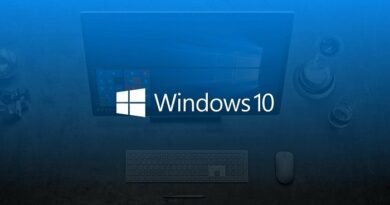Unleashing the Power of Windows 11: A Guide to Setting Static IP Address
Table of Contents
In the dynamic realm of Windows 11, the default connectivity option relies on a dynamic IP address. However, this versatile operating system also grants users the flexibility to opt for a static IP address, a valuable choice for specific scenarios.
Decoding the Default Connection
Windows 11’s default stance is to embrace the dynamic dance of network connections through an IP address dynamically assigned by the router or a unified Modem/Router entity. The dynamics of this assigned IP address mean it can change upon the expiration of the DHCP lease or a simple restart of the modem/router.
While many users find this default setup sufficient, there are instances where configuring a static IP address becomes imperative. Services like file/printer sharing and port forwarding function optimally with a static IP address, ensuring seamless operation without interruptions caused by the acquisition of a new dynamic IP address.
Steps to Empower Your Connection with a Static IP
Step #1: Locating Router IP Address
- Open Command Prompt as an administrator by right-clicking and selecting “Run as administrator” from the Windows search bar.

- Type
ipconfig/allin the Command Prompt window and press Enter.

- Scroll down to the “Wi-Fi” or “Ethernet” section, noting the Subnet Mask Address and DHCP Server Address (Router IP Address).

- Close the Command Prompt window.
Step #2: Setting the Static IP Address
- Navigate to Settings > select Network & internet > Advanced network settings.

- In the “Related Settings” section, click on More network adapter options.

- Right-click on your active Network (Wi-Fi or Ethernet) and select Properties.

- On the properties screen, choose Internet Protocol Version 4 (TCP/IPv4) and click Properties.

- Under IPv4 properties, select “Use the following IP Address,” enter Default Gateway (Router IP Address), Subnet Mask Address (from step #1), and your desired Static IP Address. Click OK.

As illustrated, ensure the first three sets of numbers in the IP address align with the default gateway address, allowing flexibility only in the last number set (ranging from 1 to 255).
Why is the default option in Windows 11 to connect using a dynamic IP address?
The default option in Windows 11 is to use a dynamic IP address, which is assigned by the router or a combined Modem/Router unit, allowing for dynamic changes based on DHCP lease expiration or router restart.
In what scenarios might setting a static IP address on a Windows 11 computer be necessary?
Setting a static IP address becomes necessary in scenarios where specific services like file/printer sharing and port forwarding rely on a stable address. Without a static IP, these services may cease to function when the computer acquires a new dynamic IP address.
How can users find the router IP address and Subnet Mask in Windows 11?
Users can find the router IP address and Subnet Mask by opening Command Prompt as an administrator, typing ipconfig/all, and noting down the relevant information in the “Wi-Fi” or “Ethernet” section.
What is the significance of the first three sets of numbers in the IP address when assigning a static IP?
The first three sets of numbers in the IP address must match the default gateway address, ensuring proper alignment for effective network communication. Only the last number set can be changed, ranging from 1 to 255.
In conclusion
Mastering the process of setting a static IP address in Windows 11 unleashes the full potential of network connectivity. While the default dynamic IP option suits many users, the ability to configure a static IP proves essential for services like file/printer sharing and port forwarding. The provided step-by-step guide ensures users can seamlessly navigate through the intricacies of locating the router IP address and assigning a static IP. Empowering Windows 11 users with this knowledge not only enhances their digital experience but also fosters a deeper understanding of network configurations. Embrace the power of a stable connection in the dynamic world of Windows 11.



